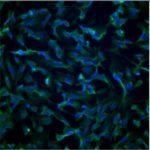Link to Pubmed [PMID] – 21745563
Free Radic. Biol. Med. 2011 Oct;51(7):1406-10
DNA topoisomerases, enzymes involved in DNA replication and transcription, are known as targets for anticancer drugs. Among the various types of topoisomerase inhibitors, flavones (F) have been identified as promising compounds. In this study, it is shown that the potency of flavones acting as topoisomerase I inhibitors can be ranked according to their redox properties and their 3D structure. Linear correlations were observed between the topoisomerase I inhibition activity exerted by five flavones (chrysin, apigenin, kaempferol, fisetin, quercetin) and experimental and theoretical redox parameters of F. Moreover, theoretical calculations of the dihedral angle O(1)-2-1′-2′ in the flavone molecules indicate the importance of their structural and steric features in their potency as topoisomerase I inhibitors. It is suggested that the flavones might interact with the DNA-topoisomerase I complex after their oxidation into quinones via autoxidation, enzymatic oxidation, or reactions with reactive oxygen species. Our investigation opens a new strategy quantitatively based on redox and 3D structural parameters in the search for the most active flavones as anticancer drug candidates inhibiting topoisomerase I.

